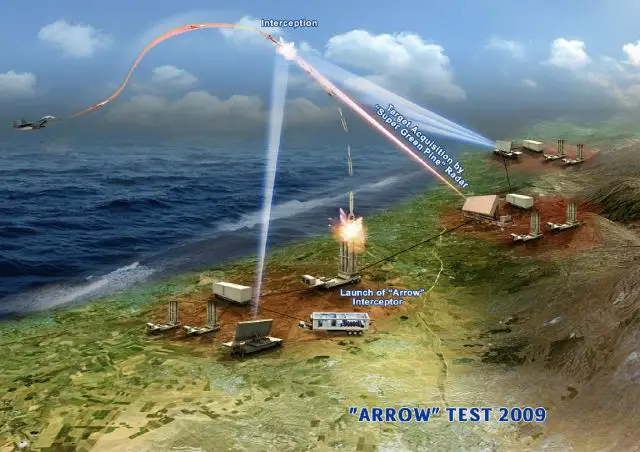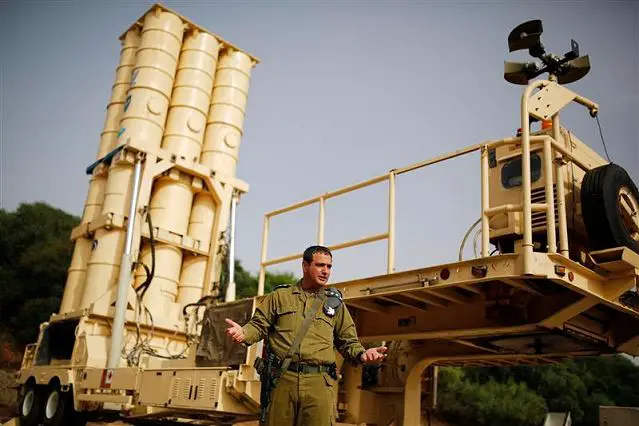| a | |||
Defence & Security News - Israel |
|||
| i | |||
| Wednesday, June 5, 2013 03:57 PM | |||
| Israel accelerates development of anti-ballistic missile Arrow 3 against Iranian nuclear program. | |||
| Israel
Aerospace Industries, flagship of Israel's defense sector, is accelerating
development of its high-altitude Arrow 3 antiballistic missile system
amid mounting concerns about Iran's nuclear program. "We're thinking
mostly about the nuclear threat," Col. Aviram Hasson, who heads the
project, told a conference on Aerial Threats in the Modern Age at the
Institute for National Security Studies in Tel Aviv Monday, June 3,2013. |
|||
 Illustration of Arrow anti missile system (Israel Aerospace Industries) |
|||
| Meantime,
there was consternation in Israel's defense establishment as a result
of an apparent U.S. slip-up in publishing details of classified plans
for a heavily protected underground facility that would include four Arrow
launch sites. IAI and the air force conducted a successful flight test for Arrow 3 Feb. 25 from the Palmachim air force base on the Mediterranean coast south of Tel Aviv although it did not involve an actual interception. Arrow 3, which IAI is developing with U.S. aerospace giant Boeing Co., is slated to become operational in 2015-16. It has a range of 1,500 miles, far greater than that of the Arrow 2 variant now in service. Once the Arrow 3 breaks free of the Earth's atmosphere, the interceptor breaks away from the launch vehicle and carries out a series of maneuvers in space as it locks onto its target, then rams it in a head-on collision. Weighing less than half the Arrow 2, Arrow 3 does not need to know the exact location of the target missile when it is launched. It locates the incoming missile once it's in space. |
|||
 Israeli army Arrow 2 anti-ballistic missile system |
|||
The
United States has pledged $250 million toward Israel's acquisition of
four Arrow 3 batteries and is expected, despite U.S. defense budget cutbacks,
to provide $680 million for a further four batteries.
Future batteries are expected to hold more interceptors than the current models, which will make them more expensive. Two Arrow 2 batteries are providing the top level of a three-tier Israeli missile defense shield that includes the short-range Iron Dome system, built by Israel's Rafael Advanced Defense Systems, and the medium-range David's Sling weapon being developed by Rafael and the U.S. Raytheon Co. Arrow 3 will become the top layer once it's operational. The theory is that whatever missiles get past its interceptors will be destroyed by the lower-altitude Arrow 2s. |
|||
Israel accelerates development anti-ballistic missile Arrow 3 against Iranian nuclear program 050313
- Posted On














